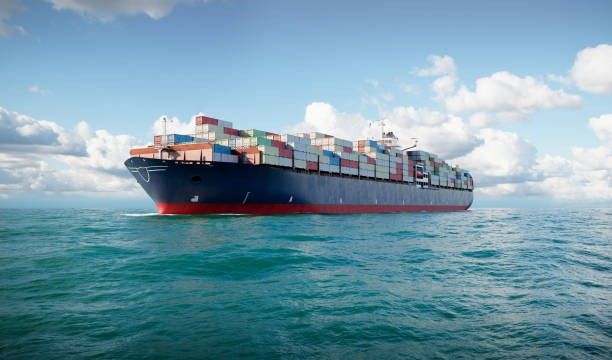- By TOP CHINA FREIGHT
- September 8, 2025
- Shipping
Table of Contents
Navigating the logistics landscape in China requires a solid understanding of the available shipping lines in China. Selecting the right carrier can significantly impact shipping costs, transit times, and overall supply chain efficiency. This guide explores the top shipping lines, compares services, and offers practical tips to optimize your international shipping operations.

What Are the Major Shipping Lines in China?
China is home to some of the world’s largest and most reliable shipping lines, handling millions of containers annually. The key players include:
| Shipping Line | Headquarters | Fleet Size | Global Reach |
|---|---|---|---|
| COSCO Shipping | Shanghai | 1,500+ vessels | 160+ countries |
| China Shipping | Shanghai | 800+ vessels | 100+ countries |
| Evergreen Line | Taipei | 200+ vessels | 80+ countries |
| CMA CGM China | Shanghai | 500+ vessels | 150+ countries |
| Maersk China | Beijing | 600+ vessels | 180+ countries |
These shipping lines offer extensive coverage, flexible routes, and specialized services for container, bulk, and break-bulk cargo. Businesses can choose carriers based on speed, cost, or destination efficiency.
How Do Shipping Lines in China Determine Freight Costs?
Freight charges depend on cargo type, weight, volume, container size, and route. Moreover, seasonal demand, fuel surcharges, and port congestion also affect pricing.
| Shipping Type | Container Size | Approx. Cost (USD) |
|---|---|---|
| FCL (Full Container Load) | 20ft | $1,200–$2,000 |
| FCL | 40ft | $2,000–$3,500 |
| LCL (Less than Container Load) | Per CBM | $50–$120 |
| Break-bulk | Variable | $80–$150 per ton |
Additionally, customs clearance fees, insurance, and documentation can add to total costs. Using professional freight forwarders ensures accurate cost estimation and smooth operations.
Why Choose Chinese Shipping Lines for International Trade?
Chinese shipping lines are preferred due to:
1.Extensive Port Network:
Major ports like Shanghai, Ningbo, and Shenzhen handle massive cargo volumes.
2.Global Connectivity:
Access to major international destinations.
3.Competitive Pricing:
High competition reduces per-container costs.
4.Modern Fleet:
Advanced vessels improve reliability and reduce delays.
5.Specialized Services:
Options for refrigerated, hazardous, or oversized cargo.
How Long Does Shipping via China’s Major Lines Take?
Transit time varies by destination and service type:
| Route | Transit Time (Days) | Service Type |
|---|---|---|
| Shanghai → Los Angeles | 18–25 | Standard |
| Shanghai → Rotterdam | 28–35 | Standard |
| Shenzhen → Singapore | 7–10 | Express |
| Ningbo → Hamburg | 30–40 | Standard |
Transit time can be affected by port congestion, customs inspection, and weather delays. Planning shipments with buffer time ensures timely delivery.
What Documents Are Required for Shipping Lines in China?

Accurate documentation ensures smooth customs clearance and avoids fines. Key documents include:
| Document | Purpose |
|---|---|
| Bill of Lading (B/L) | Proof of shipment and contract of carriage |
| Commercial Invoice | Declares value and details of goods |
| Packing List | Describes items, weight, and dimensions |
| Certificate of Origin | Confirms country of manufacture |
| Export Declaration | Required by Chinese authorities |
| Insurance Certificate | Protects against loss or damage |
How to Optimize Shipping Costs with China’s Shipping Lines?
Combine multiple smaller shipments to reduce per-unit costs
Secure space during non-peak periods for lower rates.
Select ports with lower congestion and better rates
Agents negotiate competitive rates and handle documentation
Minimize unused space to reduce volumetric charges
What Are the Pros and Cons of China’s Shipping Lines?
| Aspect | Pros | Cons |
|---|---|---|
| Cost | Competitive pricing for bulk shipments | Surcharges during peak seasons |
| Speed | Reliable standard transit times | Slower than air freight for urgent cargo |
| Coverage | Extensive global network | Limited options for remote inland destinations |
| Service | Specialized cargo handling | Some ports experience congestion |
Choosing the right line involves balancing cost, speed, and cargo requirements.
Case Study: Efficient Import of Electronics via COSCO

Scenario:
A U.S. company imported 2,000 smartphones from Shanghai.
Challenge:
Timely delivery for a seasonal launch.
Solution:
COSCO Shipping FCL was chosen for 40ft containers. The company used a freight forwarder for customs and consolidation.
Result:
Shipment arrived in 22 days, on schedule, with zero damage.
Key Takeaway:
Selecting the right shipping line and working with a professional agent ensures cost efficiency and timely delivery.
Can Shipping Lines in China Handle Specialized Cargo?
Yes, major lines offer:
- Refrigerated containers for perishable goods
- Hazardous cargo handling with safety compliance
- Oversized or heavy cargo using break-bulk or special containers
Professional shipping agents ensure proper documentation, packaging, and compliance with international safety standards.
Conclusion
Shipping lines in China offer vast options for global trade, combining extensive coverage, competitive rates, and modern fleets. Understanding transit times, freight charges, documentation, and specialized services helps businesses optimize supply chains and reduce costs. Leveraging professional freight forwarders further ensures compliance, transparency, and efficiency. Partner with reputable Chinese shipping lines to streamline your import/export operations while maintaining reliability and cost-effectiveness.
Need a Shipping Quote?
If you want expert guidance and peace of mind, our team is ready to assist.
TJ China Freight offers tailored solutions to help businesses of all sizes ship more reliably from China.

FAQs
Q1:How to select the best shipping line in China?
Consider fleet size, network coverage, rates, and reliability. Compare transit times and specialized services for your cargo type.
Q2:Are there cheaper alternatives for small shipments?
Yes, using LCL or consolidating shipments via freight forwarders can lower costs for small businesses.
Q3:Can Chinese shipping lines handle refrigerated goods?
Can Chinese shipping lines handle refrigerated goods?
Q4:How do fuel surcharges affect shipping costs?
Fuel surcharges fluctuate based on global oil prices and are added to base freight charges. Confirm rates with your agent.
Q5:Is cargo insurance necessary for ocean shipments?
Yes, insurance protects against loss, damage, or theft and is usually 0.3–0.5% of cargo value.
